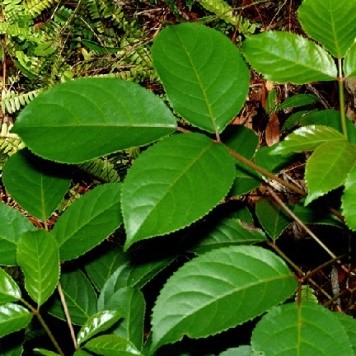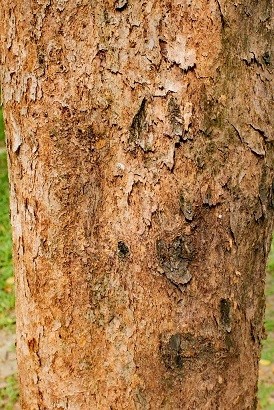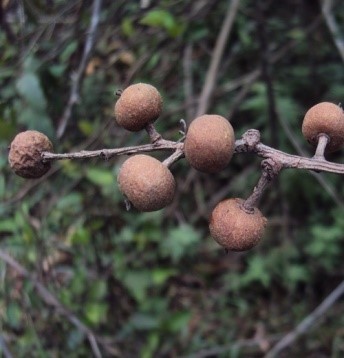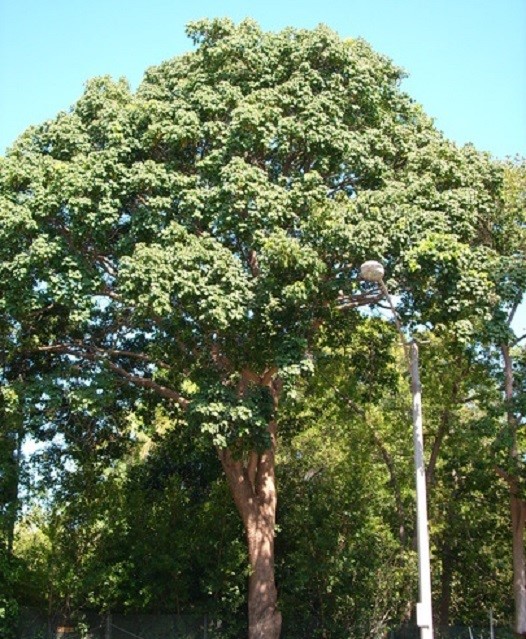Trees
Bischofia javanica Blume
Bischofia javanica Blume
Description :
A large, evergreen or
deciduous tree 15 to 17 m tall and with a diameter of 0.6 to 0.8 m. The crown
is large, oval and dense. The leaves are compound occurring in threes with the
leaflets 7.5 to 5.7 cm long and 3 to 6 cm wide. The bark is thick and dark
grey. It is dioecious. The male flowers are in long bunches and crowded. The
female bunches are open. The flowers occur in March. The fruit is a small
capsule 5 cm in diameter which contains 3 to 5 seeds. The capsules mature in
May. There are no known insects or disease problems of significance. It is
reproduced mainly from seed. Hundreds of seedlings can be seen around a tree. Sapwood
is light green to reddish brown; heartwood is red to dark reddish brown or
chocolate brown having specific gravity of 0.74 and a calorific value of 5300
kcal/kg, with Straight, interlocking grains.
Distribution :
This tree is native to
India and east to South China. In Pakistan it is planted in the plains and in
gardens. Some impressive avenues exist in Islamabad. It is an intolerant tree
that does not grow well in shade. It grows on a variety of soils but prefers
deep alluvium. It thrives on very moist sites. It requires a precipitation zone
of 700 to 1500 mm/yr or more. It prefers a sub-humid hot tropical monsoon
climate with a temperature range of -5 to 40°C at elevations up to of 1200 m.
The tree grows in shady ravines, swamps, riverbanks, and valleys in the hills.
It has some frost resistance.
Uses :
A fast growing tree with
a diameter growth of 1.3 cm/yr. This tree is grown along canals and irrigations
channels. Good as an avenue tree due to heavy shade. Also used as fuel, furniture,
sleepers, construction, pilings and ornamental.



